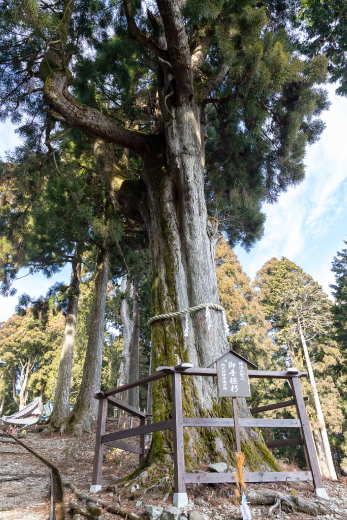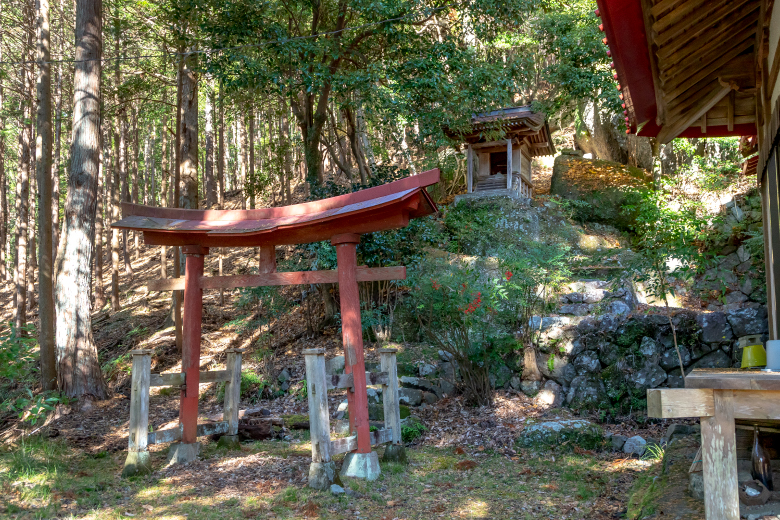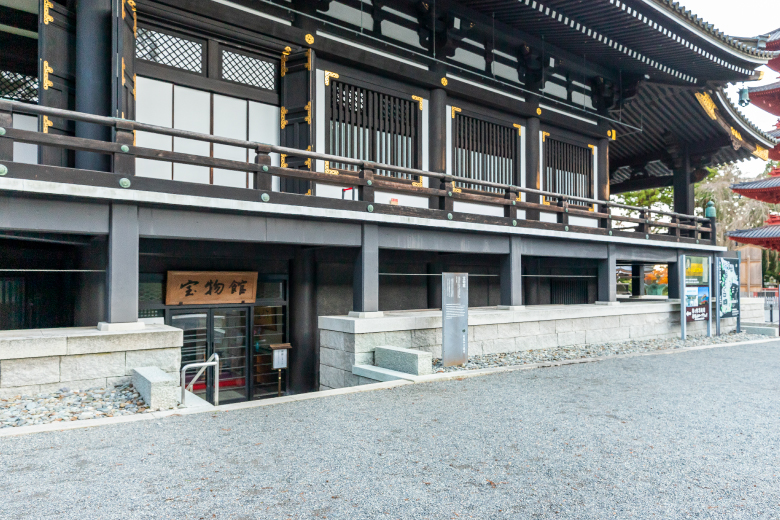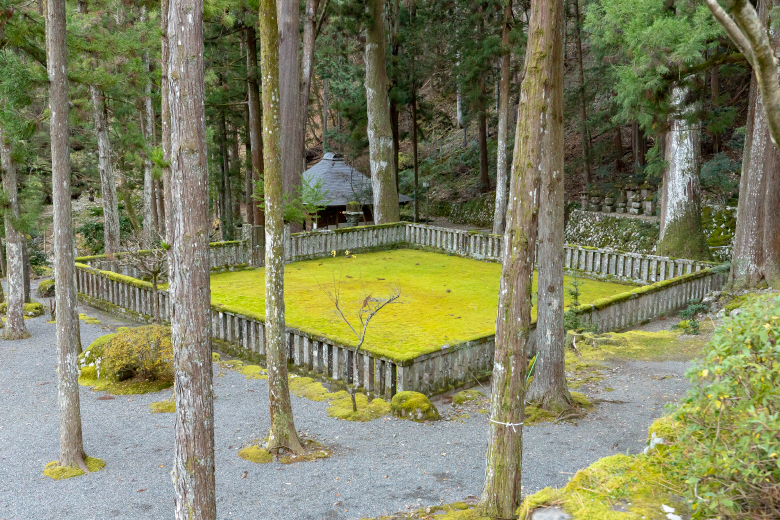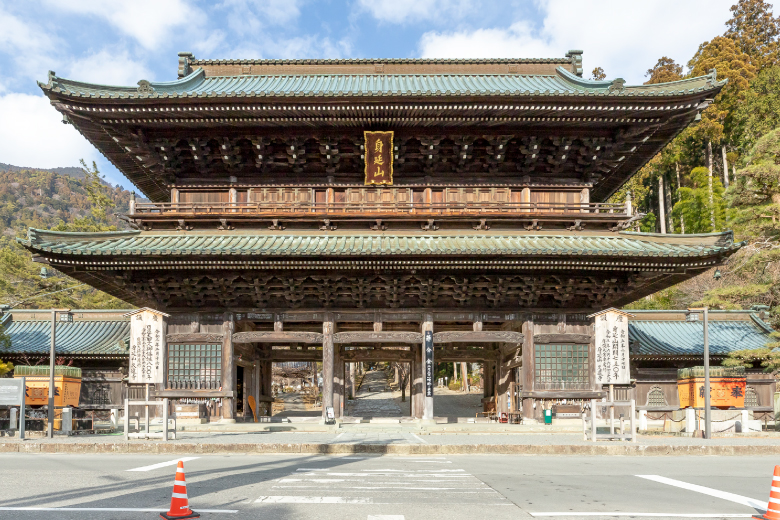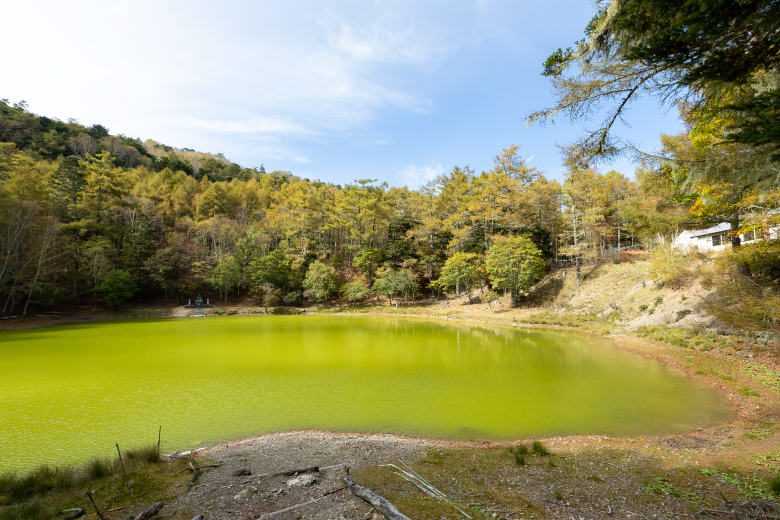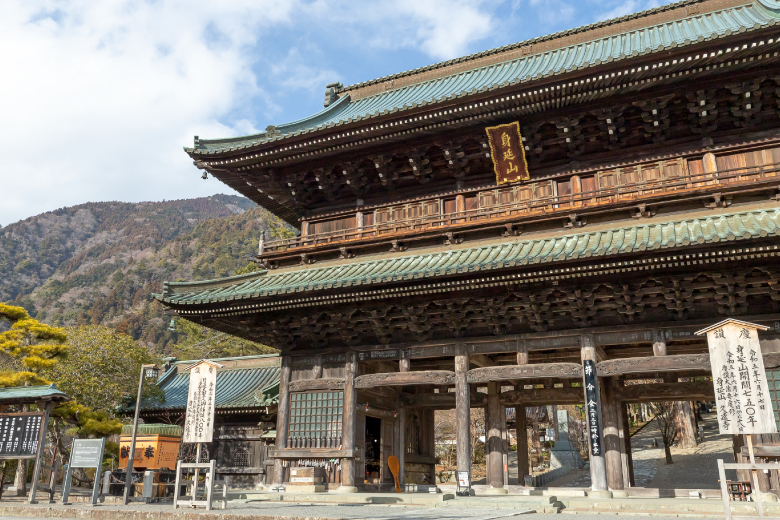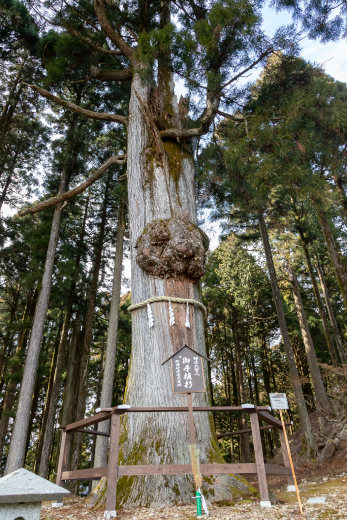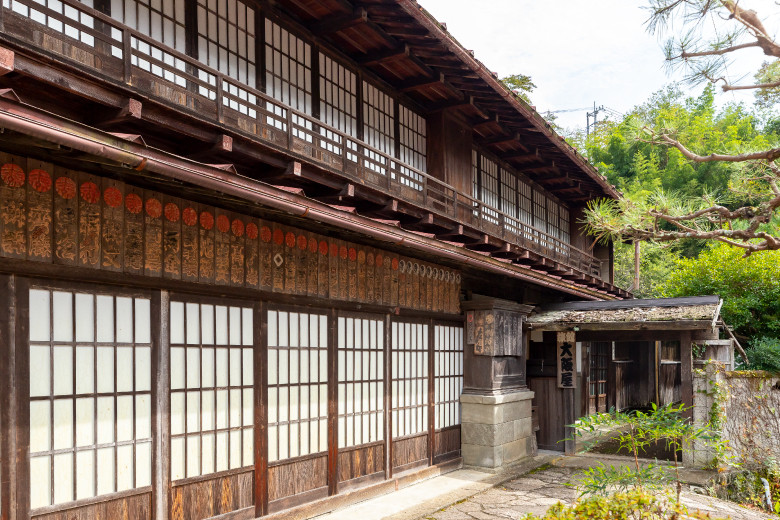The road for praying
This is the road to visit Mt. Minobu and related sites. You can encounter solemn temples and shrines, atmosphere of a post station, sounds of drums and prayers of people, and sacred landscapes of nature.
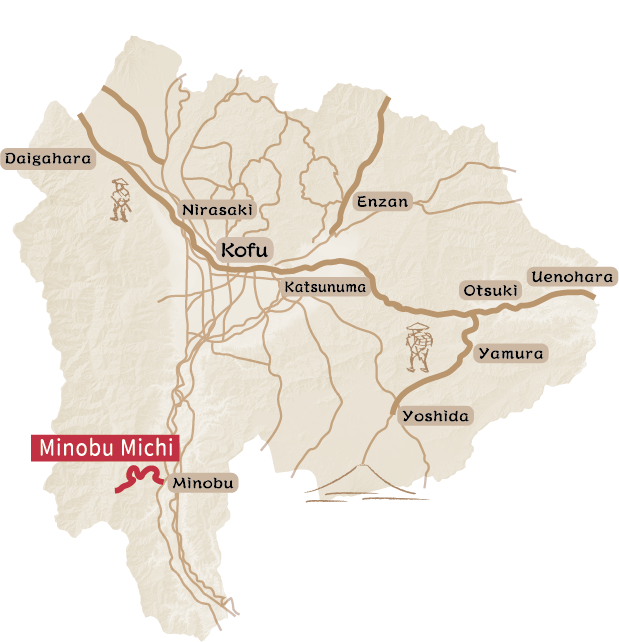
The Minobu Road is also called The Worship Road, Minobu Okan Road, or Minobusan Oiwake-do Road. It is a very steep path walked for ascetic practices starting from Minobusan Kuon-ji Temple, Sanko-do Hall, Shishin-kaku, Akasawa-shuku, Hagoromo Shirakaki Falls, and leading to Shichimenzan Keishin-in Temple. Nichiren Shonin, the founder of Nichiren Sect, placed Mt. Minobu at the center of worship, and spent time here training his disciples in his last years. His disciples built a path to Mt. Shichimen for training. This route is now used to visit Mt. Minobu. Visitors encounter solemn temples and shrines, the atmosphere of a post station, and the bustle of the town, the sounds of drums and prayers of people, and sacred landscapes of nature. The Minobu Road is the road of prayers that makes it possible to see the past and present of a sacred area filled with history and legends.
Visiting the first station for prayers to Mount Minobu and sites related to the legend of Nichiren Shonin
This route starts from So-mon Gate, goes through Monnai, San-mon Gate, Bodaitei (287 stairs), reaches Mount Minobu, heads to Oku-no-in Shishin-kaku (Inner Temple Shishin-kaku) through the main approach, and returns to San-mon via the back approach. The route features solemn temples and shrines, So-mon Gate, and San-mon Gate at Minobusan Kuon-ji Temple, and the powerful Bodaitei (287 stairs climbing 104 meters). The beautiful views of Mount Fuji and the steep peak of Mount Shichimen seen from various spots on the road are a treat for visitors enjoying this long route. Nature shows her different charms each season, charms such as cherry blossoms (weeping cherry blossoms) in spring, red foliage in autumn as well as Roku-ro cedar trees and oriental paper bush flowers, which create beautiful landscapes that harmonize with the temples and shrines in the area. Morning religious services, the chants of prayers, sounds of prayer drums (uchiwa-daiko), the bustle of followers interacting, white clothing, and other lively features of worship are all part of this route.
Distance : About 17 km / Required Time : About 4.5 Hours / On foot(Hiking)、ropeway
Visiting Mount Shichimen, the sites where Buddhism is practiced to feel power of nature and prayers
This route starts from the Hagoromo Shiraito Falls, where Oman-no-kata (a concubine of Tokugawa Ieyasu) purified herself, passes each temple along the main approach, visits Shichimenzan Keishin-in Temple, and continues to Shichimenzan Oku-no-in Temple and Jinzu-bo Temple at Sumise along the northern approach. This is a hiking path, which requires certain clothing and equipment. The walkway to the temples and shrines is in the mountains almost at the tree line, and so offers superb views, including Mount Kitadake and the Southern Alps from spots along the way. The view of the sunrise from Goraigo-ba, and Mount Fuji seen from the Oku-no-in Temple are magnificent. Visitors see morning religious services held at Keishin-in Temple and walk down the mountain along the northern approach through a bright forest protected by the gods.
Distance : About 12 km / Required Time : About 10 Hours / On foot(Hiking)、ropeway
Visiting Akasawa-shuku where time seems to pass slowly
Visitors stroll around the Akasawa area, a National Preservation District for Groups of Historic Buildings. There are many traces of this once-flourishing medieval-era post station along the road that connected Mount Minobu and Mount Shichimen. While strolling through settlements along the stone pavement, visitors enjoy grand views of Mount Shichimen and other mountains. The architecture in the district is characterized by earth floors surrounding two sides of a tatami room, a style that can be seen at Shimizuya, an inn that is now operated by Hayakawa Town as a rest place. Edo-ya and Osaka-ya were Kochu-yado, inns for worshippers, display tags with the names of groups, their addresses, and the individual names of members written on them (called itamanegi). In the center of the settlement is Myofuku-ji Temple, which has managed the key for Keishin-in Temple.
Distance : / Required Time : About 30 min / On foot
Visiting Monnai Shopping Street and Kuon-ji Temple bustling with Mount Minobu worshippers
This route starts from the Minobusan So-mon Gate, passes along Monnai Shopping Street, Niccho-do Hall, Kuon-ji Temple, the former site of the Goso-an, and San-mon Gate, and returns to So-mon Gate. Visitors feel the liveliness of the stores on the shopping street, see unique Buddhist altars and fittings sold in the area, and experience the steam and aroma wafting through the air from shops making Minobu manju, the popular local specialty rice cakes. It is also possible to visit major temples and Buddhist monks’ residences (Bo), the former site of Goso-an and the Tumulus (Gobyo-sho) to feel their sacred atmosphere.
Distance : About 4 km / Required Time : About 1 Hours / On foot
